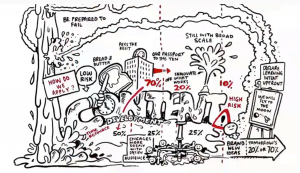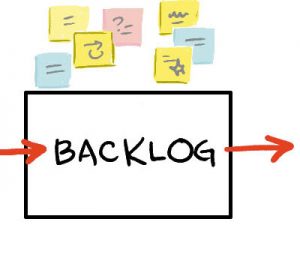 My last blog post focused on choosing the right metrics for Enterprise Business-to-Business (B2B) businesses. I’ll focus this blog post on Business-to-Consumer (B2C) companies, as the kinds of metrics that should be measured are quite different.
My last blog post focused on choosing the right metrics for Enterprise Business-to-Business (B2B) businesses. I’ll focus this blog post on Business-to-Consumer (B2C) companies, as the kinds of metrics that should be measured are quite different.
First, I should admit that I have relatively little experience with many kinds of B2C kinds of companies. I’ve never worked for a consumer packaged goods company or retail or restaurants. I do have experience with two kinds of B2C companies: mobile applications and consumer gadgets. For this blog post, I’m only going to cover mobile applications.
As I said in my previous post, the “right” metrics vary by the stage or maturity of the business. Let’s take each stage in turn.
Stage 1 – Early Days
Many entrepreneurs think the most important metric early on is the number of downloads, and they focus on that metric. They try to get in TechCrunch or get on Apple’s various promotion pages (App of the Day), and celebrate when they get X thousand downloads. I think this is a huge mistake.
The most important metrics to focus on early on are engagement and repeat usage. After someone downloads the app for the first time, do they try it again? How long do they keep on using it until they tire of it? How much time do they spend in the application? If you have a freemium version, what percentage of users are converting to the paid version?
You want to get these metrics right first with a limited set of users before you go widespread. Otherwise, you’re just going to lose a lot of potential users and lose them permanently. Mobile apps live or die by the aphorism “you only get one chance to make a first impression”. Make sure that first impression is a good one before you try to drive demand.
It’s also important to get the right value to price relationship between your “freemium” version and your paid version, if you have one. I’ve seen a number of companies give away too much in their freemium version, with little incentive for anyone to convert to a paid version. If you’re going to adjust this, you need to do this early, before you get a lot of users.
Stage 2 – Growth
Once you have a mobile app with good engagement and repeat usage, then the drive is all about active users. In addition to downloads, you need to look at your retention rate, or it’s inverse, your churn rate.
Where possible, measure this daily, or at the least, weekly. How many net users (New users – users lost to churn) are you adding each day? Is the number of net new users flat, increasing or decreasing? Look at this by channel or source, as well.
Using an analytics package that allows you to measure these things by cohorts can also be useful in giving you a clearer view of the impact of changes that you make in your application and their impact.
Stage 3 – Monetization
You may monetize your app in stage 2, but the focus in stage 2 is on getting to sufficient size that you can attract advertisers or generate sufficient in-app sales.
Stage 3 is all about the money. If you have a freemium version, conversion to the paid version is a key metric. If you have in-app purchases or a subscription model, you want to measure Lifetime Value (LTV), sometimes known as Customer Lifetime Value (CLV). Again, viewing these by cohorts can be useful in giving you a clearer impact of your changes as you roll them out.
If you use paid channels to acquire users, you’ll also want to measure the cost of acquisition, and which channels convert better than other channels.
What do you think? What metrics do you use to measure marketing in a B2C mobile applications company?



